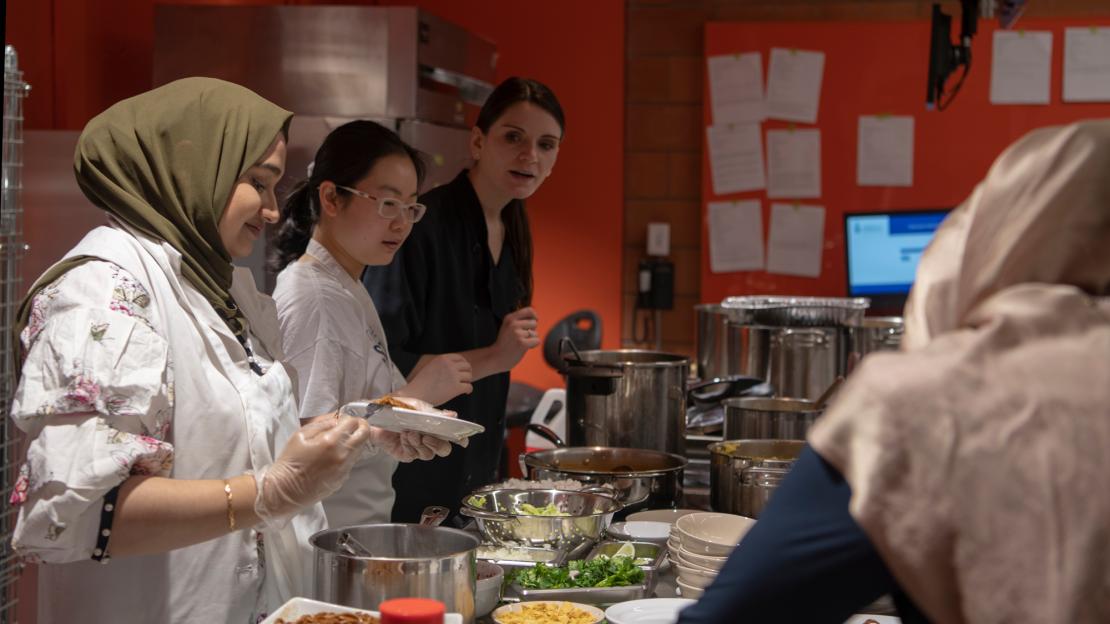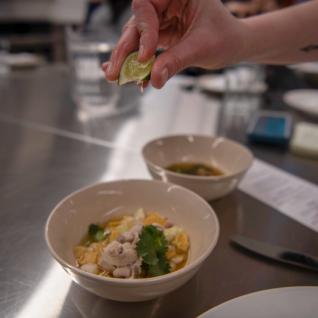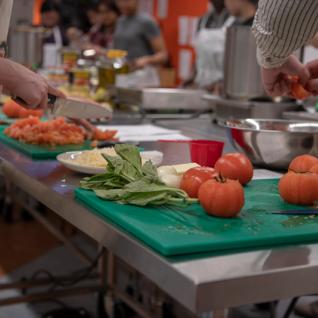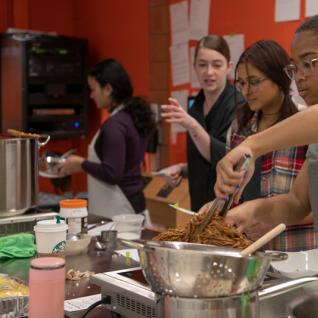Students enrolled in Edible History filled a tall order for their midterm — 18 recipes from every continent on Earth, spanning 700 years of human history.
Each year, students in the course run a pop-up restaurant, serving recipes and history lessons for diners. Held in the Culinaria Kitchen, the fifth annual pop-up event featured a new theme: “Food on the Move.” The menu was a strategically crafted timeline, offering a look at how human tastes have spread across the world.
The day began with a lamb dish from 13th-century Iraq and ended on a Sri Lankan-Tamil chicken curry featured in the UTSC Cookbook in 2015.
“If we start to think about all the different things that come into shaping our food systems, suddenly we stop thinking about the world as individual corners, but instead as this interconnected web of entangled foods and diners,” says Professor Dan Bender, who teaches Edible History.
Beginning in the spice trade, the recipes traced the spread of key ingredients, such as corn. Corn moved from Latin America to Europe during the Columbian Exchange, the mass transfer of culture, people, ideas and, of course, foods, that spread after Christopher Columbus arrived in North America.
“If we start thinking about interconnected food systems, then we can on the one hand think about what we share,” Bender says. “But we can also think about systems of power, worlds of empire, demands, environment and all those different things.”
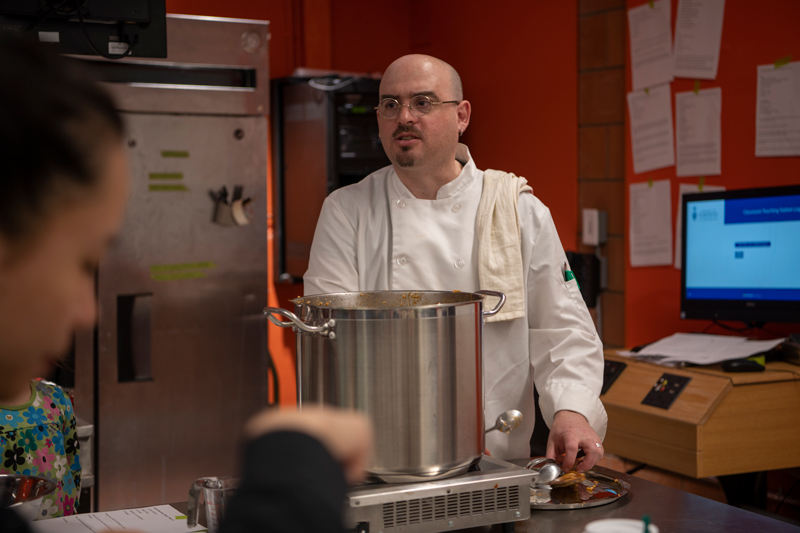
While corn moved across continents, knowledge of how to prepare it did not. This culminated in the two different, but very connected, dishes students prepared from the Columbian Exchange era — a pozole rojo from Mexico, made from hominy (corn kernels ground finely) and a polenta from Italy, made from cornmeal (a course flour made from dried corn).
Fifth-year student Bianca Petrini worked to bring these two dishes to pop-up participants. Though she says she is a horrible cook, she enjoys food preparation and clean-up, and left the kitchen smiling.
“It’s such a great atmosphere, because everybody is so positive and wants to help,” Petrini says. “It shows the character of the people who come to UTSC.”
Students later prepared a 1951 recipe from the Hilton Hotel in Mexico — an insight into how the chain interpreted taco plates in the 1950s. Bender says the dish would have likely tasted unfamiliar to someone living in Mexico at the time.
The menu also featured a dish using spam, the canned, cooked meat that moved across the world as the military did through the Second World War. Another had travelled through time more than space — luskini’kin, a traditional dish of the Lennox Island Mi’Kmaq First Nation.
Students were observed for participation marks by Kelsey Kilgore and Amanda Wedge, the course’s teaching assistants (TAs) and PhD candidates in history.
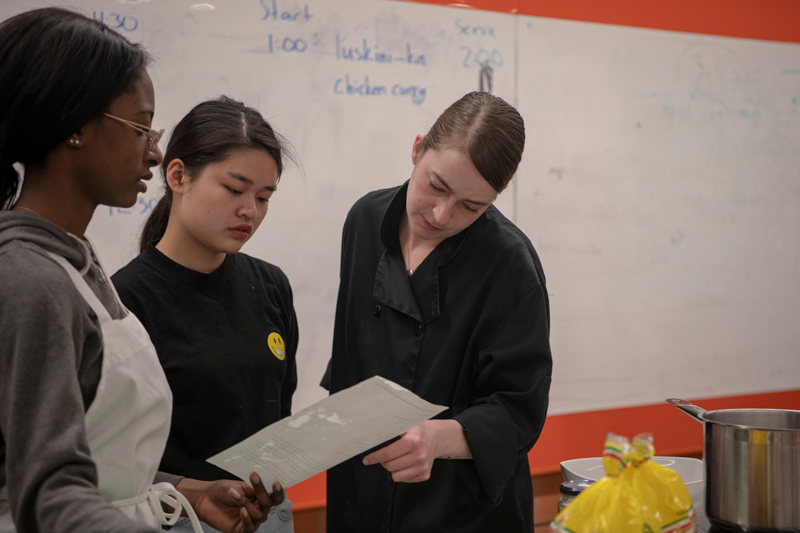
Kilgore says she has seen the pop-up experience reflected in their writing later in the course — understanding the role of food in a culture or food matrix is part of their final paper.
“One of the most gratifying moments with teaching this course is seeing how students begin to connect food as historical reenactment,” Kilgore says. “There is something very important and powerful about being able to apply what you’ve read to a hands-on experience.”
Wedge says the theme works particularly well in a diverse location like Scarborough. She adds the many different recipes give students the chance to connect to, and see themselves reflected in, course material.
“It really gets them thinking about the exchange of people and ideas, and the blending of cultures — I think that really gets them engaged and excited,” Wedge says.
“It’s really nice to see people shine in this kind of environment, especially when you have students who are quiet in tutorial, but then they come in here and they are superstars.”
